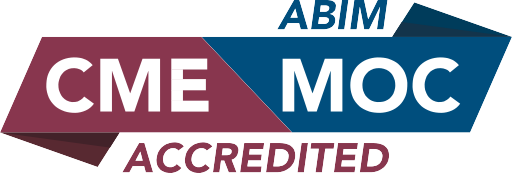Course Description
This is the recording of the live presentation.
This webinar is using real-life clinic cases to illustrate the use of guidelines, new therapies in type 2 Diabetes Mellitus, and the use of continuous glucose sensor to better manage our patients. There is a growing use of SGLT2i, GLP1ra, and now dual agonists GLP1ra/GIP but we face challenges of learning how to avoid or alleviate the side-effects of these medications. This course is designed to teach how to individualize care, while not being afraid to utilize new therapies to not just help with glycemic control in our patients but also any complications particularly ASCVD, CKD, HF, and obesity. Learning to deal with the side effects is the key to success and not being afraid to try an agent again. In seeing our patients with hyperglycemia and the complications of it, we often can overlook the not so usual presentations and continue usual treatment. By the end of the course, you should feel comfortable using the new therapies and thinking beyond just treating hyperglycemia in our patients.
Target Audience
Physicians-in-Practice, Fellows, Residents, Pharmacist, Nurse/Nurse Practitioner, Physician Assistant, Allied Health Professional
Learning Objectives
- Understanding the importance of individualizing care in the treatment of Type 2 Diabetes Mellitus
- Recognizing that newer agents SGLT2i and GLP1ra have indications beyond glycemic control for ASCVD, CKD, and HF.
- Minimizing the side effects of new therapies
- Using diabetes technology (CGM) to make treatment decisions.
- Recognizing unusual presentations of hyperglycemia that may mirror typical type 2 diabetes mellitus but have very different treatment approaches
Accreditation Statement
The Endocrine Society is accredited by the Accreditation Council for Continuing Medical Education to provide continuing medical education for physicians. Endocrine Society has achieved Accreditation with Commendation.

AMA PRA Category 1 Credit
The Endocrine Society designates each activity in this course for a maximum of 1.00
AMA PRA Category 1 Credits™. Physicians should claim only the credit commensurate with the extent of their participation in the activity. While offering CME credits noted above, this program is not intended to provide extensive training or certification in the field.
Please note that while other accrediting bodies accept AMA PRA Category 1
credit, we can only award and report this credit for MDs/DOs. For those outside of this accreditation, please complete the participation evaluation and use that certificate as proof of attendance to submit to your accrediting body.

Maintenance of Certification (MOC)
Successful completion of each CME activity in this course, which includes participation in the evaluation component, enables the participant to earn up to 1.00 points in the American Board of Internal Medicine (ABIM) Maintenance of Certification (MOC) program. Participants will earn MOC points equivalent to the amount of CME credits claimed for the activity. It is the CME activity provider's responsibility to submit participant completion information to ACCME for the purpose of granting ABIM MOC credit.
For questions about content or obtaining CME credit, please contact the Endocrine Society at info@endocrine.org
Faculty and Disclosures
FACULTY AND DISCLOSURES
Dianne S. Cheung, MD MPH FACE
President CACE – Clinical Association of California Endocrinologists
Associate Clinical Professor
UCLA Division of Endocrinology, Diabetes, and Metabolism
UCLA Health South Bay Endocrine
STATEMENT OF INDEPENDENCE
As a provider of CME accredited by the Accreditation Council for Continuing Medical Education, the Endocrine Society has a policy of ensuring that the content and quality of this educational activity are balanced, independent, objective, and scientifically rigorous. The scientific content of this activity was developed under the supervision of the Endocrine Society’s peer reviewers.
DISCLOSURE POLICY
The faculty, committee members, and staff who are in position to control the content of this activity are required to disclose to the Endocrine Society and to learners any relevant financial relationship(s) of the individual that have occurred within the last 12 months with any commercial interest(s) whose products or services are related to the content. Financial relationships are defined by remuneration in any amount from the commercial interest(s) in the form of grants; research support; consulting fees; salary; ownership interest (e.g., stocks, stock options, or ownership interest excluding diversified mutual funds); honoraria or other payments for participation in speakers' bureaus, advisory boards, or boards of directors; or other financial benefits. The intent of this disclosure is not to prevent planners with relevant financial relationships from planning or delivery of content, but rather to provide learners with information that allows them to make their own judgments of whether these financial relationships may have influenced the educational activity with regard to exposition or conclusion.
The faculty reported no relevant financial relationships.
The Endocrine Society staff report no relevant financial relationships.